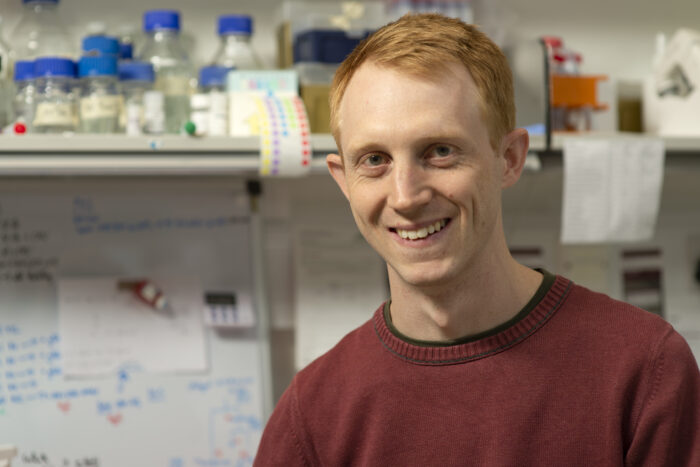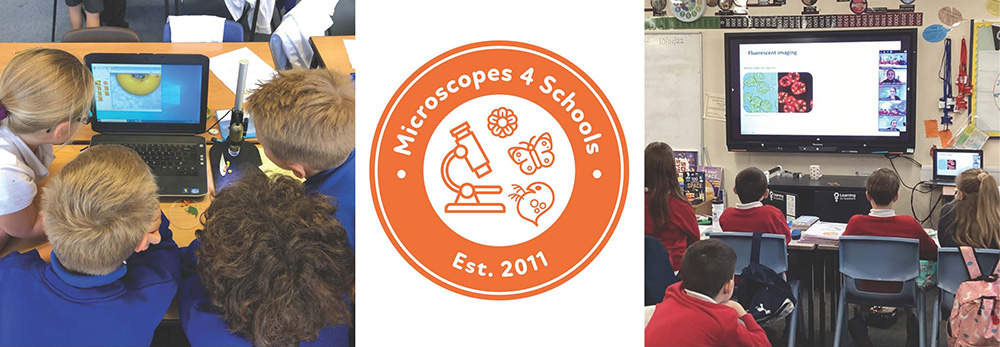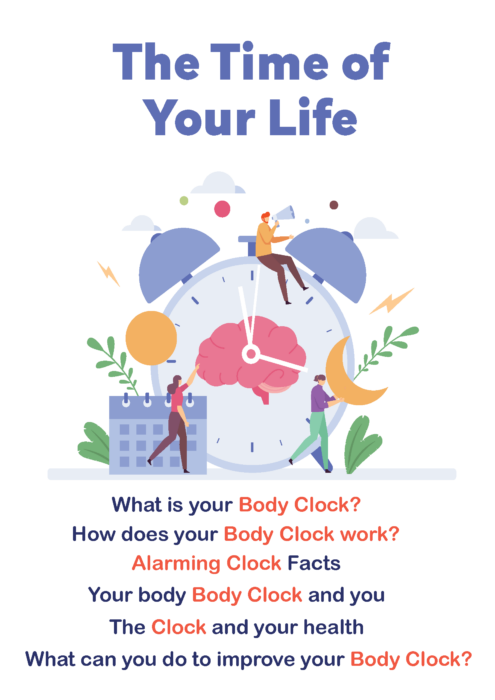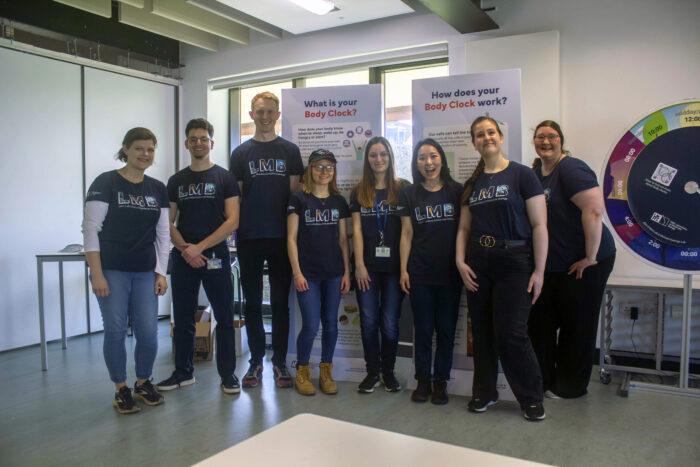
The LMB is committed to facilitating interactive and exciting ways for its scientists to share their research with people of all ages. Through a variety of public engagement activities, LMB researchers can share the benefits of their work, inspire future generations of scientists and increase understanding and support for science more broadly.
Andrew Beale is a staff scientist in John O’Neill’s group, which aims to understand the mechanisms of daily cellular timekeeping and how the circadian regulation of biological processes is achieved. Here, Andrew shares his experiences of public engagement, reflecting on the diverse ways to connect with audiences inside and outside the LMB, and encourages others to explore this important aspect of a research career.
Public engagement has been a significant part of my career from the very start of my scientific journey. In fact, at one point it almost became my full-time career – my first role after my Ph.D. was at London’s Science Museum. Although I eventually returned to research, that experience gave me a new perspective on science’s role in society.
Engaging with the public is deeply satisfying and important—it’s an opportunity to interact with people who are curious about science, understand their interests, and have meaningful conversations. It also hones your communication skills, helps clarify your scientific questions, and reminds you what drew you to doing research in the first place. Engagement is more than just sharing information; it’s about making science relevant and accessible to everyone. It’s an essential part of what we do as scientists, ensuring that our work has a broader impact.
At the LMB we have many opportunities to engage with the public. The activities I’ve particularly enjoyed here highlight the diversity of ways to do engagement. Different activities, different audiences: each requiring thought about the design of your talk or activity as well as the things you want to highlight, but each rewarding the time and effort you put in.

Microscopes4Schools is a competition in which school children might be looking down a microscope for the very first time – their first entry into this fantastic (and I use that word deliberately) realm we at the LMB work in. LMB scientists visit the schools (virtually, via Zoom) to describe a little bit of that realm in which they work and encourage the children to explore it themselves using loaned microscopes. I like to think of our role here in as a companion through Wonderland. Indeed, some of the questions you get from the children during the sessions are as if they’ve stepped into Wonderland with Alice! You can guide them to notice how microstructure informs function, how colours are formed without pigment, as well as simply how strange things appear when you look closely. It’s so amazing to see what they notice and photograph.
The Cambridge Festival, on the other hand, attracts a diverse audience – from toddlers to retirees, and from all walks of life. The challenge is to create exhibits that both captivate and inform and so thought is put into interactives, graphics and wording. Some visitors really press you on specifics, others want to talk more generally about the point of your research, or how it applies to them. This year, our “Time of Your Life” exhibit, based on the circadian rhythm research of John O’Neill and Michael Hastings’ groups, sparked discussions on everything from jet lag and space travel to alternative medicine. Clearly some of those conversations were more related to my day-to-day research than others, but each reflect a position from which the public is engaging with science, and therefore what is important and interesting to them.


Another memorable engagement was participating in Pint of Science, where scientists give talks in pubs to a public audience. The format resembles an academic talk but in a different setting, with a different audience, and invites creativity. I chose to present circadian biology from a historical perspective, showing its development from early discoveries to modern research. It’s informal, with an audience more engaged than you might expect, and suits people who want to just chat science. These sorts of public talks are an excellent way to try public engagement, as it balances something familiar (the academic talk) with the need to make science accessible.
Beyond the LMB, engagement opportunities can be found within the wider community– as part of Cambridge University or subject-specific societies for example. During my postdoc here, I became the Public Outreach Fellow with the Society for Research on Biological Rhythms (SRBR). This role allowed me to think strategically about how to communicate the importance of biological rhythms to a wider audience (worldwide!) while working with senior people within the field.
One of the most impactful projects I worked on was organising the first-ever chronobiology Wikithon at the 2024 SRBR conference, an in-person hack-a-thon style session at the largest conference of our field. The aim was to improve chronobiology content on Wikipedia, enhancing the visibility and accuracy of our field’s representation on the most accessed resource in the world. Participants added thousands of words, flagged dozens of articles for priority editing, and drafted new articles for topics not yet on Wikipedia. The edited articles have had over 300,000 views—far more than any paper I’ve published! Editing Wikipedia can be done at anytime, anywhere, and is much easier than you think. It’s an easy entrance to engagement.
These experiences have not only enriched my work but have also helped me build valuable networks. Particularly with my role at SRBR, this public engagement opportunity has helped me build a network of contacts at senior levels within the chronobiology community. These networks can be slow to build, especially when you are junior in the field, but will be invaluable as I continue my career. These connections have not only expanded my opportunities but also provided insights and perspectives that have enriched my own work.
Ultimately, my experiences in public engagement have been some of the most fulfilling aspects of my career. It’s not necessarily something I find the easiest to do, but I’ve had fun doing it, learnt a lot and met some great people. There are so many ways to do it that will fit with your experience or time constraints as well as suiting your personality. I heartily encourage you to have a go —you’ll learn, grow, and help make science more accessible to all.
Further references
Microscopes4schools: Stimulating children’s scientific curiosity through microscopy
Cambridge Festival 2024: Circadian rhythms, fireflies, and tuberculosis research
Pint of Science: Cambridge
Society for Research on Biological Rhythms: Science outreach